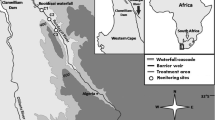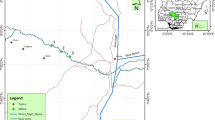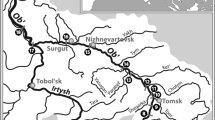Abstract.
Riverine ecosystems are subject to a large variety of man-made influences, and in recent years a new public awareness of the need to protect rivers has emerged within the industrialized world. The present study focuses on the effect of abatement of pollution from one factory on the recovery of fish and macroinvertebrate species richness in the River Petite Baïse over a 20-year period (1973–1993). Until 1973, the Petite Baïse (75 km in length) received not only factory waste (nitrogenous rich effluents) but also the untreated sewage of many villages and agricultural runoff from the river's catchment. In 1970, macroinvertebrates and fishes were absent in the river despite having initially been classified as of the barbel Barbus barbus zone, and extensive efforts were made by the factory to reduce pollution to allow the riverine community to recover. Regular surveys between 1973 and 1993 revealed a progressive improvement in water quality and the recolonization of the river by macrobenthic and fish populations. Macrobenthic fauna species richness gradually increased from zero in 1970 to level 8 or 9 in 1993 (Verneaux and Tuffery method), reflecting improvements in river water quality. Fish were not observed until 40 km downstream of the factory in 1978, 16 km in 1980, and approximately 5 km by 1990. Fish species richness increased from five in 1978 (barbel, chub Leuciscus cephalus, stone loach Barbatula barbatula, minnow Phoxinus phoxinus, gudgeon Gobio gobio) to eight in 1990 (the carnivorous brown trout Salmo fario, the omnivorous chub, and six benthophagous fishes: gudgeon, barbel, minnow, stone loach, sofie Chondrostoma toxostoma, carp Cyprinus carpio). Fish biomass 45 km downstream the factory increased from 1 g/m2 in 1978 to more than 5 g/m2 by 1990. Recolonization of the river, in particular those areas furthest downstream from the factory, occurred as a result of reductions in the nitrogen inputs emanating from the factory.
Similar content being viewed by others
Author information
Authors and Affiliations
Additional information
Received: 27 September 1996/Accepted: 16 April 1997
Rights and permissions
About this article
Cite this article
Dauba, F., Lek, S., Mastrorillo, S. et al. Long-Term Recovery of Macrobenthos and Fish Assemblages After Water Pollution Abatement Measures in the River Petite Baïse (France). Arch. Environ. Contam. Toxicol. 33, 277–285 (1997). https://doi.org/10.1007/s002449900254
Issue Date:
DOI: https://doi.org/10.1007/s002449900254




